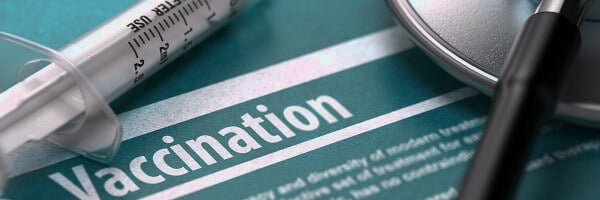Needed a same day appointment which was no problem. They were on time. Good service. Annoying fee to use a credit card.
Read More
How Common Are STDs?
Posted: Mar 20th, 2024 at 12:00AM

Physical contact doesn't come without its risks, one of which is sexually transmitted diseases (STDs). How common are STDs? What do the numbers look like across males and females, for different age groups, and for various diseases?
Let's break the numbers down, according to what research has told us.
How Common Are STDs? Research Says
According to the World Health Organization (WHO), more than one million STDs are acquired around the world every single day, most of which are asymptomatic (meaning individuals don’t display any symptoms of being infected). Every year, there are approximately 374 new infections involving one of four curable STDs: chlamydia, gonorrhea, syphilis, and trichomoniasis.
Which STDs Are More Common?
According to 2019 research from the Centers for Disease Control and Prevention (CDC), by far, chlamydia was the most common STD, with nearly 1,809,000 reported cases. (Remember, many infections go unreported<.) Gonorrhea came next, with more than 616,000 reported infections. And syphilis was third, with nearly 130,000 reported cases.
STD Reported Cases and Rates of Reported Cases by State - 2022
| State | Chlamydia Cases | Chlamydia Rate per 100,000 Population | Gonorrhea Cases | Gonorrhea Rate per 100,000 Population | Primary and Secondary Syphilis Cases | Primary and Secondary Syphilis Rate per 100,000 Population |
| Alabama | 31,060 | 612.1 | 13,279 | 261.7 | 1,190 | 23.5 |
| Alaska | 5,338 | 727.7 | 2,304 | 314.1 | 160 | 21.8 |
| Arizona | 40,796 | 554.4 | 16,490 | 224.1 | 2,151 | 29.2 |
| Arkansas | 17,918 | 588.3 | 6,792 | 223 | 1,001 | 32.9 |
| California | 192,647 | 493.6 | 80,257 | 205.6 | 7,849 | 20.1 |
| Colorado | 26,646 | 456.3 | 8,784 | 150.4 | 918 | 15.7 |
| Connecticut | 12,738 | 351.3 | 4,979 | 137.3 | 248 | 6.8 |
| Delaware | 5,177 | 508.3 | 1,464 | 143.8 | 238 | 23.4 |
| Florida | 106,873 | 480.4 | 44,333 | 199.3 | 4,618 | 20.8 |
| Georgia | 72,662 | 665.8 | 31,450 | 288.2 | 2,182 | 20 |
| Hawaii | 5,530 | 384 | 1,478 | 102.6 | 231 | 16 |
| Idaho | 5,976 | 308.2 | 1,098 | 56.6 | 118 | 6.1 |
| Illinois | 71,564 | 568.8 | 26,442 | 210.2 | 1,457 | 11.6 |
| Indiana | 33,834 | 495.2 | 12,396 | 181.4 | 686 | 10 |
| Iowa | 14,634 | 457.2 | 4,466 | 139.5 | 334 | 10.4 |
| Kansas | 13,935 | 474.4 | 4,997 | 170.1 | 347 | 11.8 |
| Kentucky | 18,358 | 406.8 | 6,820 | 151.1 | 670 | 14.8 |
| Louisiana | 36,200 | 788.6 | 15,015 | 327.1 | 1,225 | 26.7 |
| Maine | 3,128 | 225.8 | 621 | 44.8 | 82 | 5.9 |
| Maryland | 31,234 | 506.7 | 11,164 | 181.1 | 781 | 12.7 |
| Massachusetts | 28,373 | 406.4 | 9,206 | 131.9 | 824 | 11.8 |
| Michigan | 42,977 | 428.3 | 16,378 | 163.2 | 972 | 9.7 |
| Minnesota | 22,072 | 386.1 | 8,152 | 142.6 | 675 | 11.8 |
| Mississippi | 22,968 | 781.2 | 10,933 | 371.9 | 913 | 31.1 |
| Missouri | 32,346 | 523.6 | 15,209 | 246.2 | 1,454 | 23.5 |
| Montana | 4,089 | 364.2 | 1,311 | 116.8 | 325 | 28.9 |
| Nebraska | 9,627 | 489.2 | 2,560 | 130.1 | 215 | 10.9 |
| Nevada | 16,189 | 509.4 | 7,392 | 232.6 | 902 | 28.4 |
| New Hampshire | 2,830 | 202.8 | 662 | 47.4 | 74 | 5.3 |
| New Jersey | 33,147 | 357.9 | 9,330 | 100.7 | 1,018 | 11 |
| New Mexico | 11,172 | 528.6 | 4,157 | 196.7 | 761 | 36 |
| New York | 103,673 | 526.9 | 43,362 | 220.4 | 3,603 | 18.3 |
| North Carolina | 64,525 | 603.1 | 26,715 | 249.7 | 2,473 | 23.1 |
| North Dakota | 3,704 | 475.3 | 1,426 | 183 | 64 | 8.2 |
| Ohio | 54,459 | 463.2 | 22,969 | 195.4 | 2,402 | 20.4 |
| Oklahoma | 20,190 | 502.3 | 8,974 | 223.2 | 1,278 | 31.8 |
| Oregon | 15,504 | 365.6 | 5,494 | 129.6 | 1,117 | 26.3 |
| Pennsylvania | 54,645 | 421.3 | 18,851 | 145.3 | 1,397 | 10.8 |
| Rhode Island | 5,199 | 475.3 | 1,444 | 132 | 133 | 12.2 |
| South Carolina | 35,525 | 672.5 | 14,352 | 271.7 | 1,033 | 19.6 |
| South Dakota | 5,160 | 567.1 | 3,067 | 337.1 | 767 | 84.3 |
| Tennessee | 37,942 | 538.1 | 16,069 | 227.9 | 1,126 | 16 |
| Texas | 155,483 | 517.8 | 61,999 | 206.5 | 4,655 | 15.5 |
| Utah | 11,108 | 328.6 | 3,171 | 93.8 | 238 | 7 |
| Vermont | 1,281 | 198 | 174 | 26.9 | 3 | 0.5 |
| Virginia | 40,789 | 469.7 | 13,437 | 154.7 | 936 | 10.8 |
| Washington | 28,431 | 365.2 | 11,400 | 146.4 | 1,920 | 24.7 |
| West Virginia | 4,450 | 250.7 | 1,258 | 70.9 | 218 | 12.3 |
| Wisconsin | 25,676 | 435.7 | 8,740 | 148.3 | 742 | 12.6 |
| Wyoming | 1,793 | 308.4 | 310 | 53.3 | 21 | 3.6 |
Who's Most Susceptible?
How common are STDs for different groups of people? Not everyone is at an equal risk. Certain groups of people are more likely to become infected with an STD. Newborns, women, and gay/bisexual men are more likely to suffer from syphilis. Women and gay/bisexual men are more likely to contract gonorrhea. And women are more likely to become infected with chlamydia. Based on self-reporting, women are more likely to acquire chlamydia, while men are more likely to acquire gonorrhea and syphilis.
What Age Ranges Are Likely to Acquire an STD?
For what ages are STDs most common? While an individual of any age can become infected with a sexually transmitted disease, there are indeed some patterns. For instance, in 2018, there were 26 million new cases of infections, and about half of them occurred in individuals between the ages of 15 and 24. This is likely due to two reasons: Biologically, young women are more prone to STDs, and many young people don't undergo the recommended testing. Infection rates peak between the ages of 20 and 34.
Do STDs Last Forever?
There are eight pathogens that are linked to the highest incidence of STDs. Half are curable, and the other half are not.
The curable STDs are syphilis, gonorrhea, chlamydia, and trichomoniasis. The four incurable infections are hepatitis B, herpes simplex virus (HSV), HIV, and human papillomavirus (HPV).
While “incurable” means that the individual will have the STD for life, modern medicine has found ways to manage acute symptoms, and long-term management can help prevent disease progression. If left untreated, some STDs can have more serious long-term consequences or even be fatal. This is why regular testing and, if needed, treatment are so important to stay healthy.
How Do STD Rates Differ From State to State?
Where in the country are STDs most common? The number of infections varies widely depending on where you are in the United States. 2024 data from U.S. News & World Report lists the top 10 states with the most STDs:
- Mississippi
- Louisiana
- South Dakota
- Alaska
- Georgia
- South Carolina
- Alabama
- North Carolina
- Arkansas
- Arizona
Some states (and countries) might see higher rates for a number of reasons. These can include a lack of education about preventative health and a lack of resources (or access to resources) to treat STDs.
For instance, the California Healthy Youth Act aims to provide young people with the skills they need to protect their sexual and reproductive health. They encourage an understanding of sexuality as part of human development. It holds educators to high standards to provide pupils with accurate, comprehensive, and unbiased information and instruction.
As another example of how these variables can fluctuate geographically, the WHO notes that diagnostic testing is widely used in high-income countries but is overwhelmingly unavailable in middle-income and low-income countries.
Educating individuals on sexual health, in addition to making healthcare affordable and accessible, is key to decreasing the prevalence of sexually transmitted diseases around the world.
Get Tested and Have Safe Sex
If you're sexually active — and especially if you have a new partner or multiple partners — then it's smart to get tested every three to six months. Always consult with a medical provider if a known exposure occurs or if there are any signs or symptoms. Encourage open communication with your partner(s) and encourage them to get tested as well. Additionally, use protection to help prevent the spread of dangerous sexually transmitted diseases. Together, we can make a difference!

















